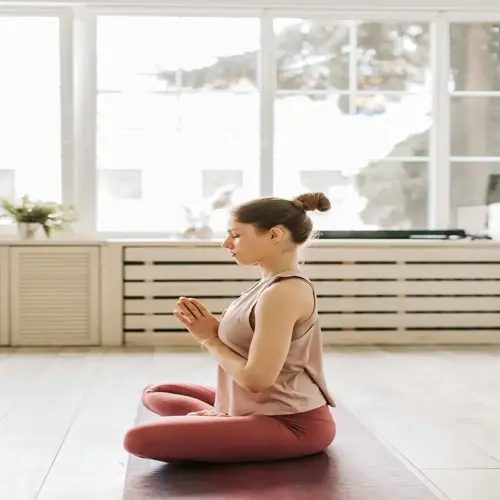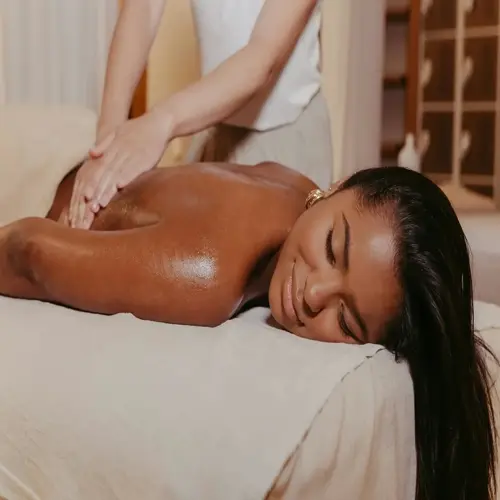10 Ways to Achieve Anxiety Relief Naturally

Written by
Thomas Wilson
Reviewed by
Prof. Graham Pierce, Ph.D.Effectively reduce anxiety through lifestyle and mindfulness changes over time.
Each day, prioritize magnesium foods or hydration to manage your daily stress hormones.
You can prevent adrenal fatigue by slowly decreasing the caffeine in your diet and using herbal teas for soothing effects.
Mindfulness exercises such as the 4-4-6 breathing approach help give immediate nervous system regulation.
A healthcare provider can safely introduce supplements and collaboration with your other providers.
Simply being outdoors in nature for just 10 minutes per day can decrease cortisol levels significantly.
Article Navigation
When experiencing lingering anxiety or palpitations, many of us look for natural anxiety relief. The physical symptoms are evidence of the body's stress response going into overdrive. I can remember patients saying they felt trapped and needed relief without the use of harsh medications.
People are seeking gentle approaches to relieve daily tension rather than prescriptions. This guide discusses five suggestions to employ today! It will examine herbal supports, mindful habits, movement approaches, professional suggestions, and the truth about common myths.
Make sure to discuss any changes to your anxiety management approach with your doctor. What works great for one individual may not work for another, based on their health history. Your safety is always paramount when establishing a natural toolkit for lasting calm.
Lifestyle Foundations for Anxiety Relief
Your daily habits of hydration have a direct effect on the neurotransmitter balance for mood stability. I have seen some clients transform their levels of anxiety simply by drinking eight glasses of water daily. Dehydration creates stress on your body, requiring the release of cortisol, which fuels anxiety. Carrying a reusable bottle is a reminder in itself.
That morning cup of coffee may initially provide you with a burst of alertness. Still, it will manifest itself as an anxiety trap later. Caffeine overstimulates the adrenal glands, and there will be accompanying egg-crate periods of energy and protein consumption. At other times, you will suffer increased tension. Take an herbal tea, such as chamomile, after the first cup. Your nervous system will be grateful to you by afternoon.
Drinking affects sleep quality and is often mistaken for other anxiety symptoms. Follow the CDC guidelines, which recommend no more than one drink per day for women and two for men. As someone who has struggled with a habit of drinking wine in the evenings, I know how easy it is for excessive amounts of wine, or extra glasses, to cause worry about the next day. Try sparkling water with lime.
Sleep for a minimum of seven hours a night for true restoration. Create a dark and cool environment in the bedroom and turn off all screens one hour before bed. Consistent sleep hygiene resets your stress response, making your other anxiety strategies more effective. Your mind repairs itself during its deep sleep cycles.
Herbal Supplement Strategies
For generalized anxiety, chamomile capsules at 500mg t.i.d. give gentle support. I have seen clients find calm with this standard German chamomile in weeks. As a tea steeped for five minutes, it is more soothing than the capsules seem too clinical. Both effectively decrease nervous system reactivity.
Lavender aromatherapy is beneficial to adults, but oral supplements should not be given to children under age twelve. Essential oils should also be kept away from tender, young skin. I diffuse lavender whenever I need instant calm during stressful workdays at my desk. The scent of the flower sends a message of safety to the brain.
Valerian root is helpful for insomnia related to anxiety. It should not be taken for more than four weeks. Extended use may disrupt the natural sleep patterns. Take 300-600 mg thirty minutes before bed. Additionally, the earthy scent of the herb was initially bothersome to me. This was taken care of by using capsules. Take with soothing music.
Passion flower is combined in commercial preparations with valerian to enhance GABA stimulation. Look for these combinations in reliable sources. A patient declared this herb her natural rescue remedy for public speaking. Use forty-five drops of the liquid extract for a quick effect.
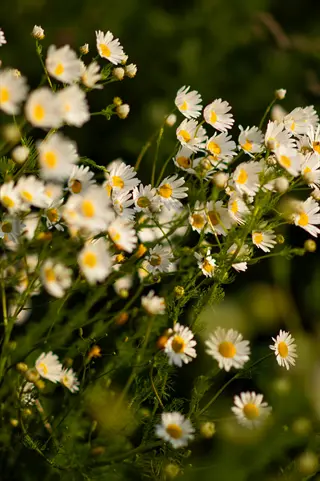
Chamomile
- Effectiveness: Significantly reduces symptoms of generalized anxiety disorder in clinical trials
- Recommended form: 500mg capsules taken three times daily or as tea steeped for 5 minutes
- Safety considerations: May interact with blood thinners like warfarin and cause allergic reactions in ragweed-sensitive individuals
- Evidence strength: Multiple randomized controlled trials support its anti-anxiety properties
- Preparation tip: Use 2-3 teaspoons of dried flowers per 8 oz (237ml) of boiling water for tea
- Special note: Long-term use of high-dose extract appears safe based on research studies

Lavender
- Application methods: Oral capsules (80mg/day) or aromatherapy diffusion for 30 minutes daily
- Clinical evidence: Reduces pre-surgical anxiety levels comparable to some pharmaceuticals
- Precautions: Can cause constipation and headaches; endocrine disruption in young populations
- Optimal timing: Use aromatherapy in evening for improved sleep quality and relaxation
- Storage guidance: Keep essential oils in dark glass bottles away from direct sunlight
- Safety note: Oral supplements contraindicated for children and during pregnancy
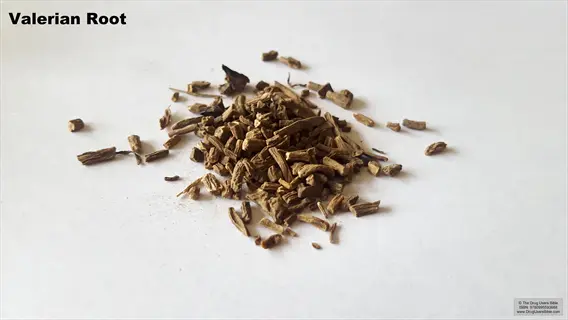
Valerian
- Dosage protocol: 300-600mg extract 30 minutes before bedtime for anxiety-related insomnia
- Duration limitation: Maximum continuous use period of 4 weeks unless medically supervised
- Mechanism action: Increases GABA neurotransmitter activity similar to anti-anxiety medications
- Potential side effects: Morning drowsiness, headaches, and occasional digestive discomfort
- Combination warning: Avoid with alcohol or sedatives due to additive sedative effects
- Preparation note: Strong odor may be unpleasant; capsules preferred over tea for consistency
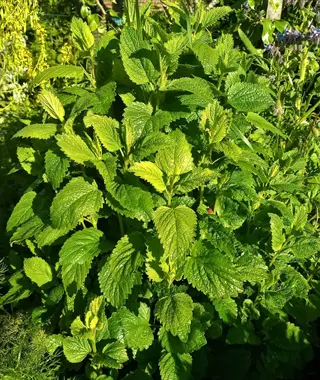
Lemon Balm
- Anxiety application: Reduces worry and restlessness in acute stressful situations
- Preparation methods: Fresh leaves in tea (4-5 leaves per cup) or standardized 300mg (0.3g) capsules
- Onset timing: Calming effects typically noticed within 1 hour of consumption
- Research findings: Clinical studies show reduced anxiety in post-surgical recovery patients
- Storage requirements: Dried leaves maintain potency for 6 months in airtight containers
- Safety profile: Generally well-tolerated but may cause mild nausea; avoid during pregnancy
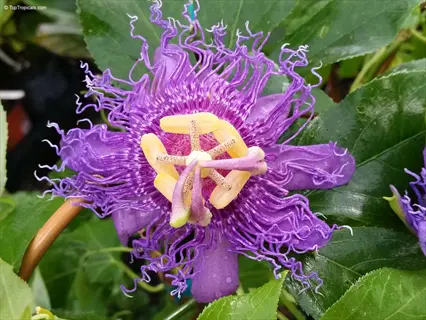
Passion Flower
- Dosage range: 45 drops of liquid extract or 2 cups (474ml) of tea daily for acute anxiety relief
- Effectiveness data: Comparable to oxazepam in clinical trials with fewer side effects
- Active compounds: Contains harmala alkaloids that increase GABA brain activity
- Combination use: Frequently blended with valerian or hops in commercial preparations
- Duration advice: Limit continuous use to 2 months maximum followed by break period
- Special consideration: May enhance sedative effects of anesthesia medications
Mindfulness Practices
Deep breathing exercises bring immediate alleviation during intensive moments of panic, while meditation fosters resilience that is long term. Utilize the 4-4-6 method: inhale for four count, hold for four count, exhale for a six count. This technique is different from the technique employed in meditation for mental observation. These tactics create a useful overall attack on anxiety angsters.
Journaling neutralizes emotions while helping to identify these progress patterns. Write three gratitudes daily and one challenge report. Seeing growth in journals builds the confidence sought. My clients often see anxiety triggers they would have missed through this simple habit. Keep your journal available at all times.
Yoga positions help tune up your nervous system physically through certain stretches. The child's pose signals safety to your body instantly. Hold each pose for at least five breaths. I practice the legs-up-the-wall pose daily to calm my stress response. Consistent practice matters more than perfect practice.
Exposure to nature works in any case, from parks in cities to views through windows. Just ten minutes in the presence of trees can decrease cortisol levels. Look outside or notice five natural elements around you each day. In busy urban environments, I look at indoor plants or the clouds. Your sympathetic nervous system responds to any green setting.
Deep Breathing
- Method: 4-4-6 technique: Inhale through nose for 4 seconds, hold for 4 seconds, exhale through mouth for 6 seconds
- Physiological impact: Lowers heart rate by activating parasympathetic nervous system within 90 seconds
- Optimal timing: Practice upon waking, before meals, and during acute anxiety episodes
- Progression: Start with 3 cycles, gradually increase to 10 cycles per session
- General benefit: Consistent practice helps regulate stress response mechanisms
- Common mistake: Avoid shallow chest breathing; focus on diaphragmatic expansion
Meditation
- Fundamental approach: Non-judgmental awareness of present-moment thoughts and sensations
- Beginner protocol: Start with 5-minute guided sessions using apps like Calm or Headspace
- Neurological benefits: Regular practice supports emotional regulation pathways
- Variations: Body scan meditation for physical tension, loving-kindness for social anxiety
- Environment setup: Quiet space with comfortable seating position (chair or floor cushion)
- Consistency tip: Pair with existing habits like morning coffee or bedtime routine
Journaling
- Effective method: Positive affect journaling - 3 daily gratitude entries + 1 emotional processing note
- Cognitive restructuring: Identifies automatic negative thoughts contributing to anxiety cycles
- Duration benefit: Daily practice helps recognize and modify anxiety patterns
- Prompt examples: 'What triggered anxiety today?' 'How did I successfully cope?'
- Digital alternatives: Secure apps like Daylio for mood tracking patterns
- Privacy consideration: Use password-protected formats for sensitive content
Yoga
- Anxiety-reducing poses: Child's pose, legs-up-the-wall, and cat-cow sequences
- Frequency recommendation: Minimum 3 sessions weekly (20 minutes each) for measurable benefits
- Physiological effects: Balances nervous system activity while reducing physical tension
- Style selection: Restorative yoga for high anxiety days, vinyasa for energy regulation
- Equipment needed: Non-slip mat and optional blocks/straps for modified positions
- Contraindications: Consult physician for spinal issues or high blood pressure; avoid inversions with glaucoma
Nature Exposure
- Minimum effective dose: 10 minutes daily in green spaces (parks, gardens, tree-lined streets)
- Urban alternatives: Indoor plants, nature sounds playlists, or nature documentaries
- Sensory focus technique: 5,4,3,2,1 grounding method: Identify 5 sights, 4 sounds, 3 textures, 2 scents, 1 taste
- General outcome: Regular exposure helps shift focus from anxious thoughts to present surroundings
- Combination benefit: Pair with walking meditation for enhanced anxiety reduction
- Accessibility note: Window views of nature provide psychological benefits when outdoor access is limited
Physical Activity Approaches
Doing aerobic exercise, such as fast walking, suppresses anxiety hormones immediately, and resistance training creates resilience in the long run. Aim for 150 total minutes of moderately heart-rate elevating movement per week. Start with ten-minute episodes if overwhelmed. Consistency is what makes for lasting change.
Nature walks link physical exercise with mental renewal through the sights and sounds of living nature. Urban dwellers can also seek tree-lined streets or a community garden for a psychological boost. Observe the birdsong and the leaf patterns while exercising. My patients report receiving double the benefit from outdoor exercise compared to walking indoors.
Weighted blankets apply deep pressure to soothe your nervous system, like an embracing hug. Select one weighing roughly ten percent of your body weight. The soft compression stimulates the natural release of serotonin. I use mine while reading in the evening to produce great relaxation.
Possible adaptations exist for all fitness levels. Chair yoga focuses on joint-friendly poses, while resistance band routines cater to individuals with limited mobility. Concentrate on what your body can successfully perform today. Improvement will arrive through regular light effort, not by maximum exertion.
Aerobic Exercise
- Minimum protocol: 150 minutes weekly moderate activity (brisk walking, cycling)
- Anxiety mechanism: Increases serotonin production while reducing stress hormones
- Beginner tip: Start with 10-minute sessions, gradually building endurance
- Timing benefit: Morning exercise helps regulate sleep-wake cycles
- Intensity guide: Maintain conversation pace (60-70% max heart rate)
- Progression strategy: Add 5 minutes weekly until reaching target duration
Strength Training
- Frequency recommendation: Twice weekly targeting major muscle groups
- Neurochemical effect: Supports emotional resilience through neuromuscular adaptation
- Equipment options: Resistance bands, dumbbells, or bodyweight exercises
- Anxiety-specific focus: Emphasize controlled movements with full-range motions
- Sample routine: 2 sets of 10 reps for squats, push-ups, rows, and planks
- Safety precaution: Consult physician for joint issues; prioritize form over weight
Nature Exposure
- Dose response: Regular exposure to green spaces helps lower stress markers
- Urban adaptation: Walking tree-lined streets or sitting near water features
- Sensory enhancement: Barefoot grounding on natural surfaces when possible
- Combination benefit: Pair with mindful observation of natural elements
- Practical tip: Incorporate natural elements into daily commute routes
- Accessibility: Window views of nature provide measurable benefits
Weighted Blankets
- Weight guideline: 10% of body weight plus 1-2 lbs (0.5-1kg)
- Neurobiological effect: Deep pressure stimulation promotes relaxation
- Usage protocol: 20-minute sessions during high anxiety or pre-sleep
- Material options: Glass beads (cooler) vs. poly pellets (warmer)
- Contraindications: Not for respiratory issues or claustrophobia
- Cleaning tip: Machine wash cold; air dry to maintain weight distribution
Yoga Practice
- Anxiety reduction: Combines movement, breathwork and mindfulness
- Beginner recommendation: Start with 20-minute restorative sessions
- Key poses: Child's pose for grounding, legs-up-wall for nervous system reset
- Breath integration: Coordinated ujjayi breathing enhances calming effects
- Accessibility options: Chair yoga for mobility limitations
- Frequency: Minimum 3 sessions weekly for cumulative benefits
Professional Support Pathways
Cognitive Behavioral Therapy modifies negative thoughts as related to everyday anxiety, whereas exposure therapy is used to challenge specific phobias in a step-wise fashion directly. I would lead clients away from exposure therapy contributions for treatment of generalized anxiety; rather, I would direct them toward CBT. For specific exposure to elevators or phobias related to driving, I would refer clients for exposure treatment. Select one strategy based on your primary concern or anxiety.
Online therapy platforms have no geographic restrictions so that rural clients can receive video sessions and messaging support. Features such as evening access accommodate farmers and shift workers. In snowy winters, my Montana clients can receive care without risking unsafe driving. Mental health treatment is now universally accessible through technology.
Medication becomes necessary when panic attacks interfere with basic functioning or if natural methods plateau. For severe cases, SSRIs combined with therapy assist. As an individual who resisted prescriptions, the value of medications for crisis stabilization is now apparent. They create space for other healing work.
Immediate crisis support includes the 988 Lifeline for suicidal thoughts or profound dissociation. The text support services provide discreet support during meetings. I strongly recommend saving these phone numbers in advance to use as needed. Even the first call can help redirect overwhelming times to the safety aspect of support.
5 Common Myths
Natural remedies are completely safe because they are herbal and cannot cause harm to the body like pharmaceuticals
Plant-based substances have highly active bioactive materials which are biochemically active in the body like medicines, that may lead to side effects. For example, Kava kava has caused liver damaged necessitating transplant. St. John's wort renders birth control less effective and depressants, less effective. Other mitigating factors such as individual allergies, being pregnant and drug-drug reactions provide unique risk factors that whilst unique are best evaluated by a professional.
Natural remedies for anxiety should work quickly. If it does not work within a few days, it is ineffective.
The natural method takes regular practice to help, slowly and carefully, with neurochemical pathways. For instance, the herbal supplement valerian os a good example, as it crashes the GABA receptors and needs alone 2-4 weeks of practice to modulate them, just as the mindfulness techniques take months to rewire neural connections. All natural processes for anxiety have complex physiological manifestations and patterns into which they are woven. Hence they cannot be rewired over night. Or weekly, for that matter. That is where patience and constant practice, without quick fixes, for permanent results comes in.
Natural over-the-counter supplements don't interfere with prescribed medications.
herbal products adversely affect drug metabolism by influencing liver enzyme systems. For example, chamomile increases the power of blood thinners or anticoagulants and increases the possibility of bleeding, and passion flower enhances the effects of anesthesia drugs in a dangerous manner. Since there is no regulatory supervision of dietary supplements, all remedies must be reviewed by the physician to prevent complications requiring hospitalization, etc., due to unexpected chemical reactions in a susceptible individual.
It is impossible for exercise to change the brain chemistry of anxiety because it is strictly a physical activity.
Physical activity directly regulates the neurotransmitters that are involved in anxiety disorders. Aerobic exercise increases the production of serotonin and can decrease the body's stress hormones. The weights increase the proteins that repair the nerve body pathways that are damaged by stress. It becomes a considerable reduction of anxiety from the resupply to the body's stress management systems due to periods of practice.
Cannabidiol (CBD) can be addictive and intoxicating, as it is derived from cannabis plants
Industrial hemp-derived CBD has very low quantities of delta-9 Tetrahydrocannabinol (THC), which is the psychoactive constituent that causes intoxication. CBD utilises different receptors from THC and works mainly through serotonin pathways that do not have addictive potential or cause impairment. Drowsiness may occur, but when taken properly under medical supervision, CBD does not have the addiction profile of controlled drugs.
Conclusion
Long-lasting natural anxiety relief takes changes in lifestyle, herbal support, and strategies from trained professionals. This comprehensive approach affects various areas of your nervous system. My clients generally benefit most by incorporating these methods together rather than simply relying on one. It is the consistency that strengthens the foundation.
Tailor your approach to your individual anxiety triggers and bodily needs. Someone who has panic attacks needs tools that are different from those of a person who has social anxiety. Notice what works for your body by journaling. I constantly adjust my suggestions to meet the needs of clients.
Improvement compounds dramatically when you practice techniques daily and consistently through the months. Herbal supplements compound in the system, and mindfulness rewires the neural pathway. Start slow, but stay consistent. I found that my morning breathing ritual took full effect after three months of practice. Be patient, and change will come into your life.
It is essential to consult with professionals when planning to change any aspect of your anxiety management plan. Talk to your doctor about any supplements and your counselors about any therapy options you want to try. What may be beneficial for one individual can be detrimental in some other way for a person with different health issues. Your safety is the most important item throughout this trip.
External Sources
Frequently Asked Questions
How can I achieve anxiety relief naturally?
Natural anxiety relief combines lifestyle adjustments, herbal supplements, and mindfulness practices. Focus on balanced nutrition with magnesium-rich foods, consistent hydration, caffeine moderation, and daily stress-reduction techniques like deep breathing. Herbal aids like chamomile and lavender complement these foundations when used safely.
What is the strongest natural herb for anxiety?
Chamomile demonstrates significant anxiety-reducing properties through clinical evidence, but effectiveness varies individually. Other potent herbs include:
- Lavender for acute stress via aromatherapy or capsules
- Valerian root for anxiety-related insomnia
- Passion flower for GABA pathway modulation
- Lemon balm for situational nervousness
How quickly do natural anxiety remedies work?
Timing depends on the method and consistency:
- Breathing techniques offer immediate relief during attacks
- Herbal supplements require weeks for full effect
- Lifestyle changes show cumulative benefits over months
- Mindfulness practices build resilience gradually
Can exercise replace medication for anxiety?
While aerobic and strength training regulate neurotransmitters similarly to medications, they work best as complements to professional treatment. Exercise reduces cortisol and increases serotonin but consult a healthcare provider before altering any treatment plan, especially for severe symptoms.
What daily habits worsen anxiety?
Common triggers include:
- Excessive caffeine disrupting adrenal function
- Inconsistent sleep patterns affecting stress hormones
- Sedentary behavior reducing mood-stabilizing neurotransmitters
- Avoidance of stressful situations reinforcing fear pathways
How does nature exposure reduce anxiety?
Natural environments engage the parasympathetic nervous system through sensory inputs like phytoncides from trees and grounding surfaces. This lowers cortisol production while providing cognitive distraction from anxious thoughts. Even brief daily exposure yields measurable calming effects.
Are herbal supplements safe with prescription medications?
Many herbs dangerously interact with pharmaceuticals. Chamomile intensifies blood thinners, while St. John's Wort reduces contraceptive efficacy. Always disclose all supplements to your physician and pharmacist before combining with prescriptions to prevent adverse reactions.
What mindfulness technique works fastest during panic attacks?
The 4-4-6 breathing method provides rapid relief: Inhale deeply for four seconds, hold for four seconds, then exhale slowly for six seconds. This immediately activates the parasympathetic nervous system to lower heart rate within two minutes.
Can dietary changes significantly impact anxiety?
Nutrition directly influences anxiety through:
- Magnesium regulating stress hormone production
- Omega-3s reducing neural inflammation
- B vitamins supporting neurotransmitter synthesis
- Blood sugar stabilization preventing mood swings
When should I seek professional help for anxiety?
Consult a mental health specialist if symptoms persist despite natural methods, interfere with daily functioning, or include physical manifestations like chest pain. Professional support ensures safe, personalized treatment combining therapeutic approaches with natural strategies.
